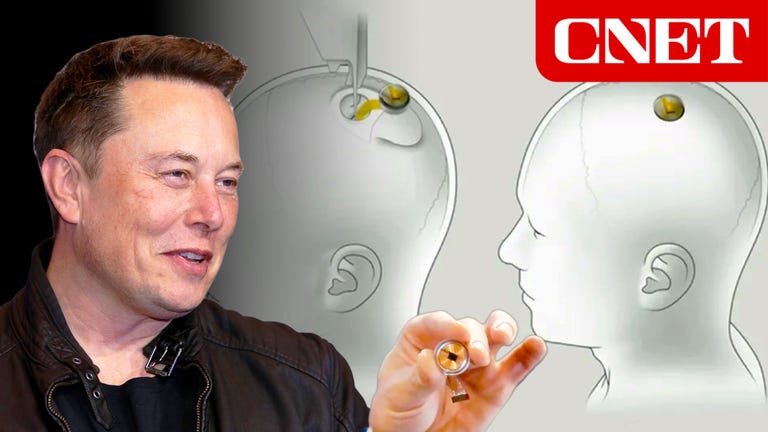Neuralink has implanted its chip in a human for the first time and is detecting electrical signals from the patient’s brain, startup leader Elon Musk said Monday. It’s one step on a very long path to making the technology safe and useful.
“The first human received an implant from Neuralink yesterday and is recovering well,” Musk said on his X social network. The initial results are showing the implant, which Musk said is named Telepathy, is registering spikes of brain cell activity.
The first device installed is part of a clinical trial Neuralink announced in 2023 testing how well the device works on people with quadriplegia because of a spinal cord injury or amyotrophic lateral sclerosis, also known as Lou Gehrig’s disease. The idea is to intercept the brain’s neural signals to move limbs then retransmit those signals elsewhere in the body so the patient can control their limbs again.


Neuralink is working on an app to let people control digital devices, in effect typing with their minds. It has demonstrated the technology with monkeys.
Neuralink is one of many brain implant efforts
The human trial is years late. Neuralink had wanted to begin human tests in 2020.
Meanwhile, rivals are also making progress in the field, called brain-machine interface or brain-computer interface technology, including an experiment that already has helped a man walk again.
BlackRock Neurotech has tested implants in humans for years. Paradromics is working on an implant, too. Synchron Medical published test results of a communications implant in 2023. Precision Neuroscience is working on less invasive implants, and Nuro hopes to succeed with noninvasive approaches that require no surgery at all.
Academic researchers have produced a steady stream of research papers, too.
What Neuralink is up to
Neuralink is founded on the idea that modern electronics and computing technology can register and interpret the electrical signs of brain cells, called neurons. That computing technology can then communicate back to the body by generating its own signals. The hope is to eventually connect to computers, for example sending signals from a camera to a blind person’s visual cortex to enable sight.
An implant works by inserting 64 threads with a total of 1,024 very small electrodes into the brain. Each electrode can sense the brain’s electrical signals. Part of Neuralink’s sales pitch is its R1 robot, designed to install these wires without disturbing blood cells in the brain.
The Telepathy unit is roughly coin-sized, though much thicker, and fits inside a hole bored in a patient’s skull. It carries a processor that oversees the communications with the brain and the outside world. It communicates and charges wirelessly.
The Neuralink human trial should last about six years, according to a brochure about the test.


